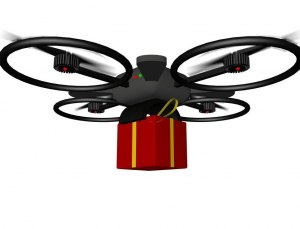FAA selects sites for drone testing

In selecting the six test-site operators, the FAA considered geography, climate, building locations, research needs, airspace use, safety, aviation experience and risk. A brief description of the test-site operators and the research they will conduct into future drone use are below:
- University of Alaska. The University of Alaska proposal contained a diverse set of test-site range locations in seven climatic zones as well as geographic diversity -- with test-site range locations in Hawaii and Oregon. The research plan includes the development of a set of standards for unmanned aircraft categories, state monitoring and navigation. Alaska also plans to work on safety standards for drone operations.
- State of Nevada. Nevada’s project objectives concentrate on drone standards and operations as well as operator standards and certification requirements. Research will also include a concentrated look at how air traffic control procedures will evolve with the introduction of drones into the civil environment. Nevada’s selection contributes to geographic and climatic diversity.
- New York’s Griffiss International Airport. Griffiss International plans to work on developing test and evaluation as well as verification and validation processes under FAA safety oversight. The applicant also plans to focus its research on sense-and-avoid capabilities. Its sites will aid in researching the complexities of integrating drones into the congested, Northeast airspace.
- North Dakota Department of Commerce. North Dakota plans to develop drone airworthiness data and validate high-reliability link technology. This applicant will also conduct human factors research. North Dakota’s application was the only one to offer a test range in the temperate (continental) climate zone and included a variety of different airspace.
- Texas A&M University – Corpus Christi. Texas A&M plans to develop system safety requirements for drones with a goal of protocols and procedures for airworthiness testing. The selection of Texas A&M contributes to geographic and climactic diversity.
- Virginia Tech. Virginia Tech plans to conduct drone failure mode testing and identify and evaluate operational and technical risks areas. This proposal includes test-site range locations in both Virginia and New Jersey.
Across the six applicants, the FAA is confident that it will meet its research goals:
- System safety and data gathering.
- Aircraft certification.
- Command and control link issues.
- Control station layout and certification.
- Ground and airborne sense and avoid.
- Environmental impacts.
Each operator will manage the test site in a way that gives access to parties interested in using the site. The FAA’s role is to ensure each operator sets up a safe testing environment and to provide oversight that guarantees each site operates under strict safety standards.
Among other requirements, test-site operators must comply with federal, state and other laws protecting an individual’s right to privacy, have publicly available privacy policies and a written plan for data use and retention, and conduct an annual review of privacy practices that allows for public comment.
Under the current law, test-site operations will continue until at least Feb. 13, 2017.
Related:
More young Americans oppose drone strikes
If you would like to comment, contact StudyHall.Rocks or like us on Facebook and tell us what you think.

